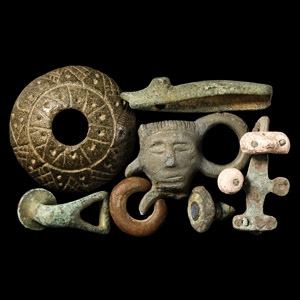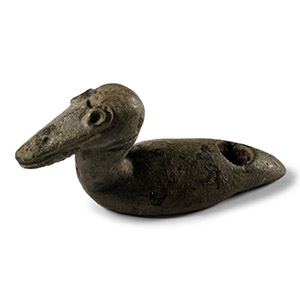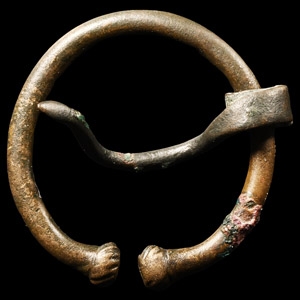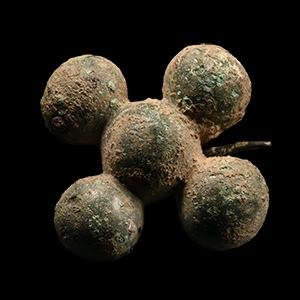Home > Auctions > 5 - 9 September 2023
Ancient Art, Antiquities, Natural History & Coins
Auction Highlights:
UK gallery, early 2000s.
These bun ingots were cast in shallow saucer depressions cut into rock where the copper ore was mined and smelted; they were then carried and traded across Europe before being broken up, melted down and having tin added to form bronze alloy; fragments such as these are frequently found as part of smith's hoards of, usually, worn out tools, weapons and raw material from the Late Bronze Age.
Acquired on the UK art market.
Property of a Ruislip, UK, gentleman, by inheritance.
Acquired on the UK art market.
Property of a Ruislip, UK, gentleman, by inheritance.
‘The Ancient Menagerie Collection’ formerly the property of a Cambridgeshire lady, collected since the 1990s and acquired from auctions and dealers throughout Europe and the USA, now ex London collection.
Acquired on the UK art market.
Property of a Ruislip, UK, gentleman, by inheritance.
‘The Ancient Menagerie Collection’ formerly the property of a Cambridgeshire lady, collected since the 1990s and acquired from auctions and dealers throughout Europe and the USA, now ex London collection.
‘The Ancient Menagerie Collection’ formerly the property of a Cambridgeshire lady, collected since the 1990s and acquired from auctions and dealers throughout Europe and the USA, now ex London collection.
‘The Ancient Menagerie Collection’ formerly the property of a Cambridgeshire lady, collected since the 1990s and acquired from auctions and dealers throughout Europe and the USA, now ex London collection.
Found Berkshire, UK.
Accompanied by a copy of the British Museum's Portable Antiquities Scheme (PAS) report no.BERK-AB8B30 and BERK-33D535.
‘The Ancient Menagerie Collection’ formerly the property of a Cambridgeshire lady, collected since the 1990s and acquired from auctions and dealers throughout Europe and the USA, now ex London collection.
Found Essex, UK.
Found Berkshire, UK.
Accompanied by a copy of the British Museum's Portable Antiquities Scheme (PAS) report no.BERK-4EFFC6.
Cf. The British Museum's Portable Antiquities Scheme, record id. BERK-4EFFC6, for this item.
Byard, A., 50 Finds From Berkshire, Amberley Publishing, 2019, p.34.
Designated 'a find of note' by the PAS and 'potential for inclusion in Britannia'. The PAS record also states: 'The style of the brooch suggests an Iron Age date but it is a very unusual style of brooch and no comparisons could be found in any of Hattatt's publications. There are two similar brooches recorded on the database; BUC-ED2437 is very similar, and WAW-DD1642 is also a related type. In this record, it is noted that the brooch style shares decorative similarities to the hangers from a chatelaine/distributor from Giubiasco, Switzerland (Jope, E.M. 2000 Early Celtic Art in the British Isles Clarendon Press Oxford, p. 285 No. 225 h).' The production of brooches began in around the 5th century B.C. This 'Vale' type has only been recognised as a regional type relatively recently.
961 - 972 of 2453 LOTS

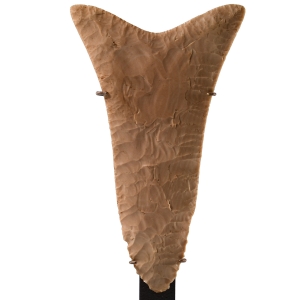
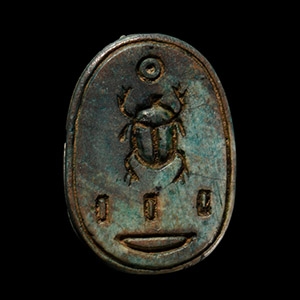
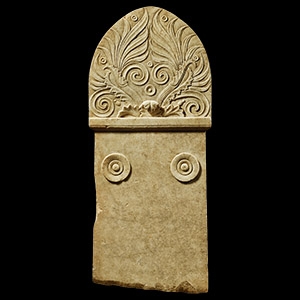
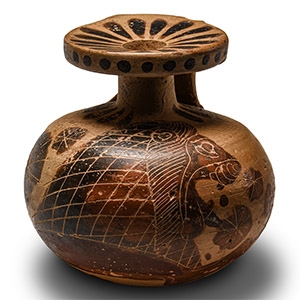
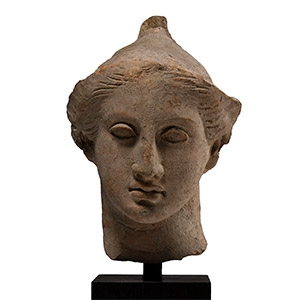
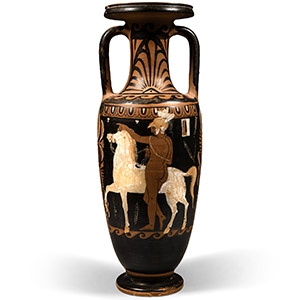
.jpg)
.jpg)
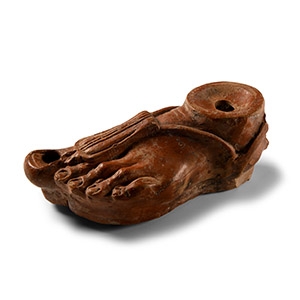
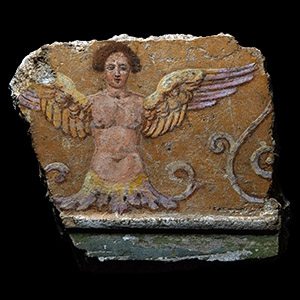
.jpg)
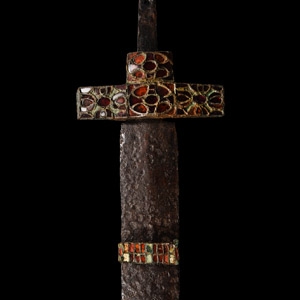
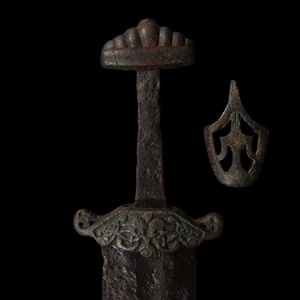
.jpg)
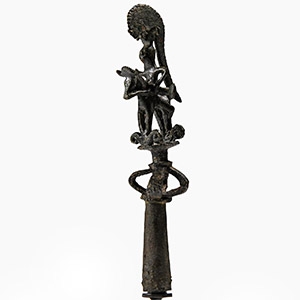


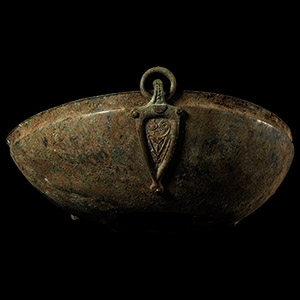
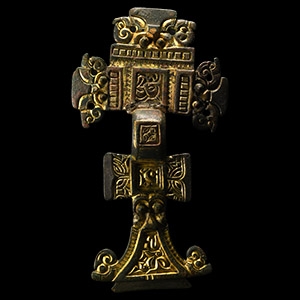
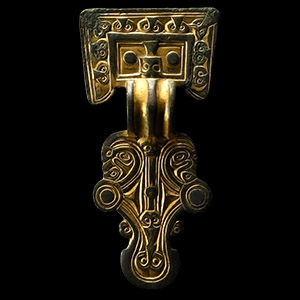
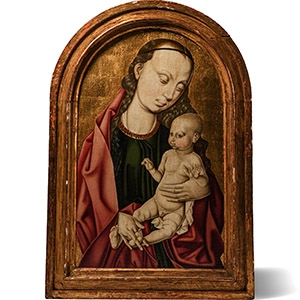

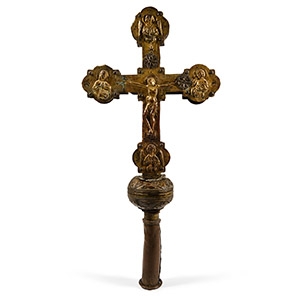
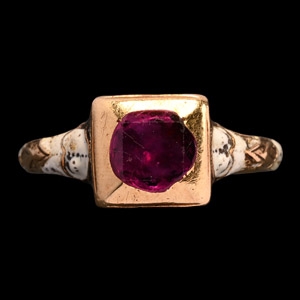

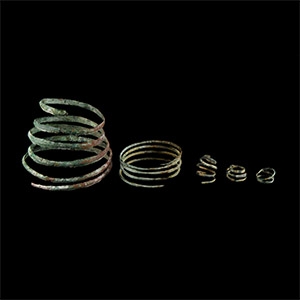

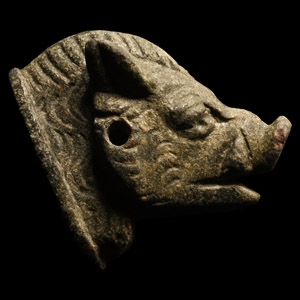

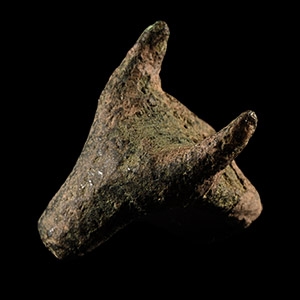
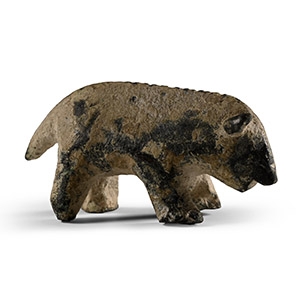
.jpg)
